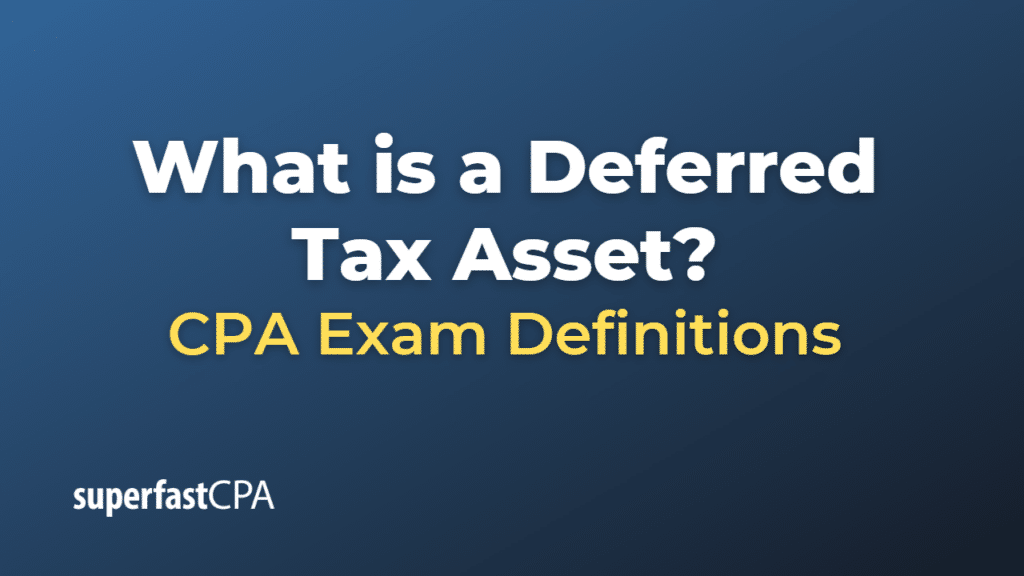Deferred Tax Asset
A deferred tax asset is an asset that is recognized on the balance sheet and represents the future tax benefit that a company will realize because of temporary differences between the financial reporting and tax bases of assets and liabilities, or due to loss carryforwards.
A few examples of situations that might lead to the creation of a deferred tax asset include:
- Business Losses: If a company incurs a loss in a financial year, it may be able to carry that loss forward to offset taxable income in future years. This potential future tax benefit is recorded as a deferred tax asset.
- Depreciation: If a company uses different methods or rates of depreciation for financial reporting and tax purposes, it may report higher expenses and thus lower profits to the tax authorities in the early years of an asset’s life (using an accelerated depreciation method) while recognizing the expense more evenly for financial reporting purposes (using the straight-line method). This creates a temporary difference, and the company records a deferred tax asset for the higher tax base.
- Provisions and Reserves: A company might create a provision for a future expense (like a warranty liability) that is allowable as a deduction for tax purposes only when the expense is actually incurred. This timing difference between financial reporting and tax purposes can create a deferred tax asset.
It’s important to note that a deferred tax asset is only valuable if the company expects to generate sufficient taxable income in the future to take advantage of the deductions. If this is not the case, the company may need to reduce the value of its deferred tax assets by recording a valuation allowance.
In the context of accounting, deferred tax assets and their counterparts, deferred tax liabilities, are a result of differences in income recognition between tax laws (like the IRS in the United States) and accounting rules (like GAAP or IFRS). This is often referred to as the concept of “temporary differences”.
Example of a Deferred Tax Asset
Let’s consider an example involving depreciation.
Suppose a company purchases a piece of machinery for $100,000. For financial reporting purposes, the company uses the straight-line method of depreciation and expects the machinery to have a useful life of 10 years with no residual value. This means it will report depreciation expense of $10,000 each year ($100,000 / 10 years) on its income statement.
However, for tax purposes, let’s say the tax authorities allow the company to use an accelerated depreciation method that results in depreciation expenses of $20,000 in the first year, $18,000 in the second year, and so forth.
In the first year, the company reports a depreciation expense of $10,000 on its income statement, but it deducts $20,000 as a depreciation expense on its tax return. This results in a temporary difference of $10,000 ($20,000 – $10,000).
Assuming a tax rate of 30%, this temporary difference creates a deferred tax asset of $3,000 ($10,000 * 30%). This is because the company was able to deduct an additional $10,000 expense for tax purposes, which will reverse in the future when the tax depreciation is less than the financial reporting depreciation.
This deferred tax asset will be recognized in the company’s balance sheet and will reduce the company’s income tax expense in the income statement over the next years until the temporary difference reverses completely.
It’s important to remember that this is a simplified example. The actual calculation of deferred tax assets can be complex and depends on a variety of factors, including a company’s specific tax situation and the tax laws in the jurisdictions in which it operates.













